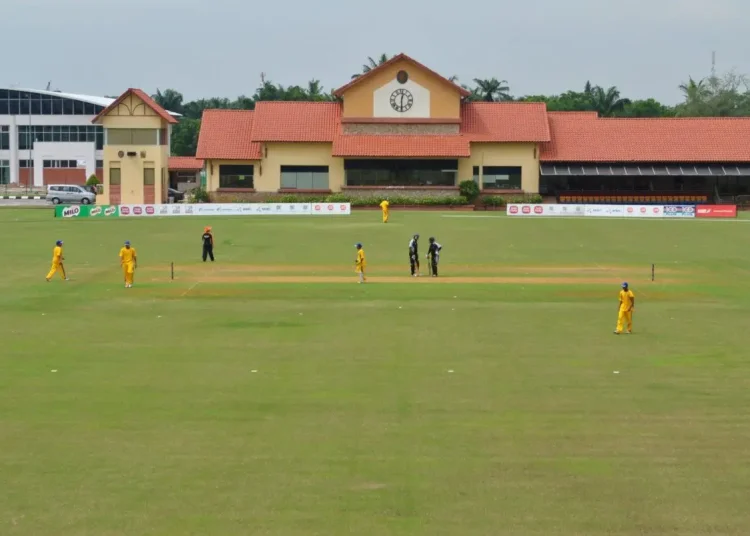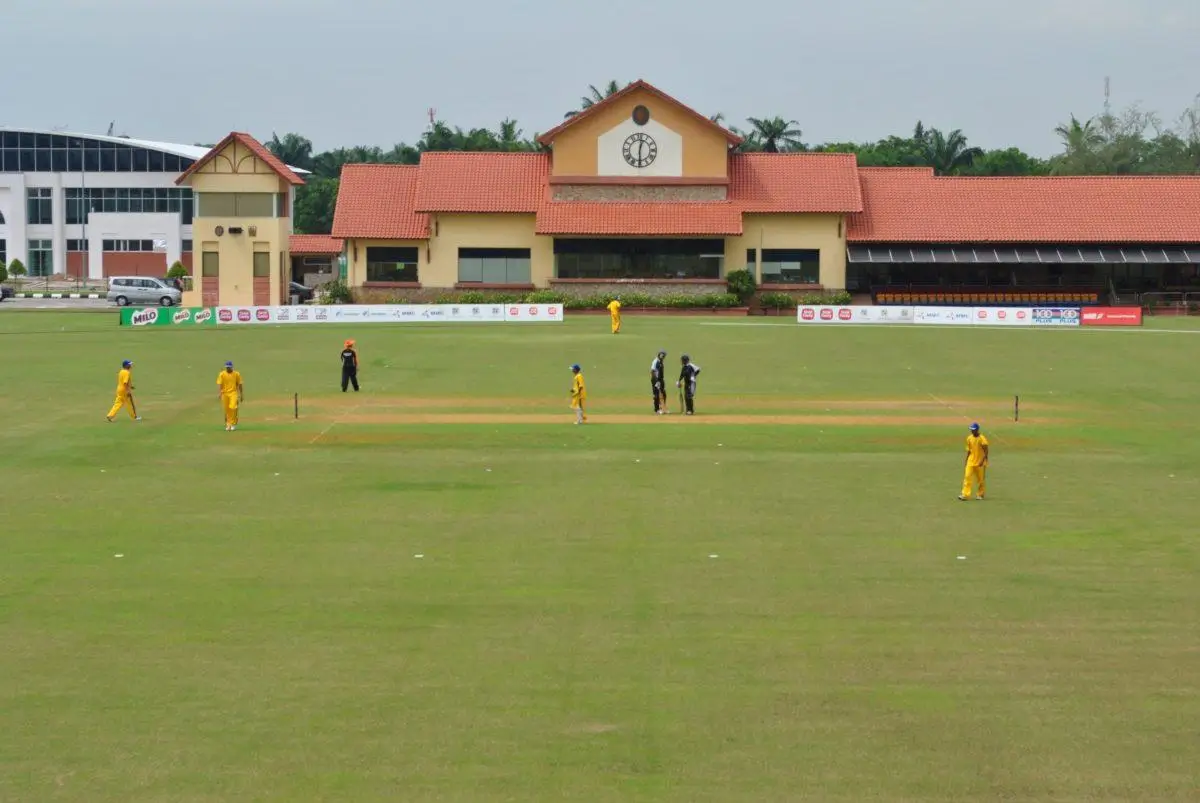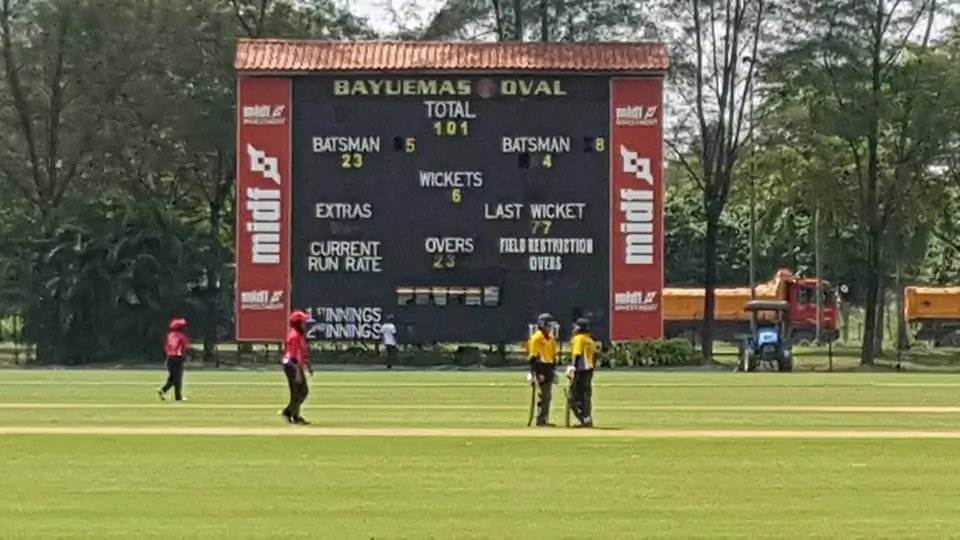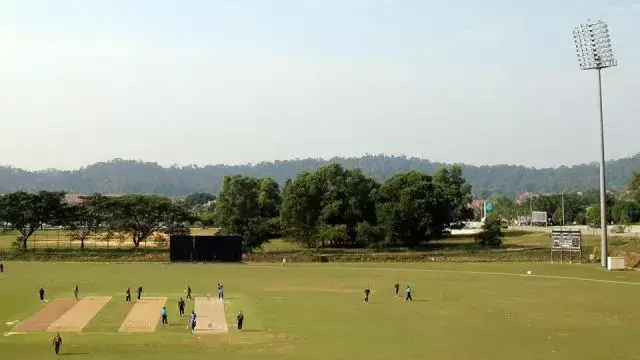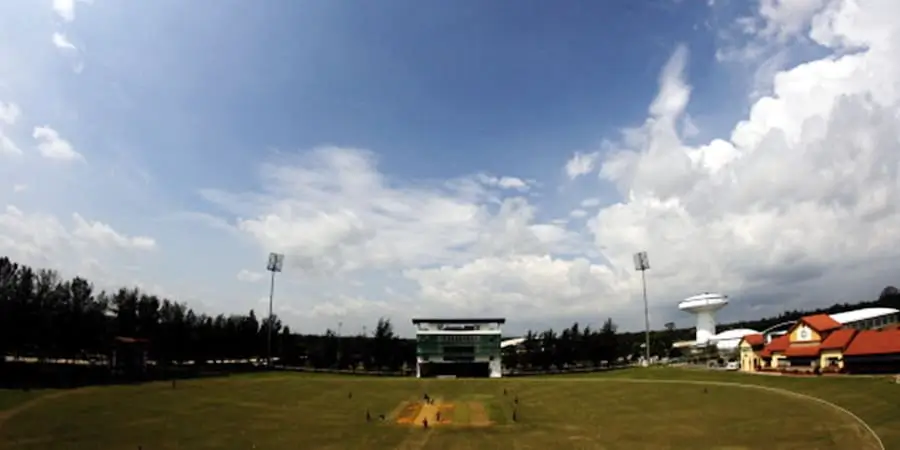As the excitement builds toward the pinnacle of youth cricket, the Bayuemas Oval in Kuala Lumpur is set to host a historic showdown in the ICC Women’s Under-19 T20 World Cup 2025. On February 2nd, the stage will be set for a thrilling final between India and South Africa, two teams that have demonstrated formidable prowess and unbeaten streaks throughout the tournament. This match is not just a final; it’s narrative of emerging talents, strategic depths, and cricketing futures being shaped in real-time.
With India looking to defend their title and South Africa aiming to etch their name on the trophy for the first time, the atmosphere is charged with anticipation and the spirit of competition. The Bayuemas Oval, known for its lively pitch and supportive crowd, promises to be more than just a venue; it will be a crucible where cricketing legends are born.
Bayuemas Oval in Kuala Lumpur Stadium
The Bayuemas Oval in Kuala Lumpur hosts matches for the ICC Women’s Under-19 T20 World Cup 2025. Here’s a detailed overview of the pitch conditions:
Pitch Characteristics
- Type: The Bayuemas Oval pitch is balanced, providing decent assistance to both batsmen and bowlers. It has been noted for its capability to support various playing styles, making it adaptable for different match scenarios.
- First Innings Average: In recent matches, the average score for the first innings has been around 93 runs, indicating a tendency for lower scores, especially in the early part of the tournament.
- Bowler Support: The pitch tends to favor bowlers, particularly in the second innings, where it becomes slower. Spinners are expected to play a crucial role later in the match4.
Match Insights
- Winning Trends: Historically, teams batting first have had a slight advantage, with the first batting team winning 10 out of 15 ODI matches played here. In T20 formats, the chasing team has won more often, highlighting a dynamic shift depending on match format1.
- Weather Conditions: Current weather forecasts predict temperatures around 30.77°C with high humidity (69%) and light rain expected, which could affect playing conditions.
While Bayuemas Oval offers a balanced pitch that can support both batting and bowling, teams may need to strategize based on the conditions during their matches. The venue’s history suggests that teams winning the toss should consider their options carefully, especially regarding whether to bat or bowl first.
What are the key features of the Bayuemas Oval pitch?
- Type: The pitch is batting-friendly, offering a flat surface that allows batsmen to play aggressively and build substantial innings. It typically provides consistent bounce, which is favorable for stroke play.
- Drainage: Designed by the New Zealand Sports Turf Institute, the ground features an excellent drainage system shaped like a saucer to ensure optimal performance even in wet conditions.
- Dimensions: The field measures approximately 115 meters by 105 meters, with boundary lengths varying from 43 meters on the leg side to 67 meters straight.
Match Statistics
- Average Scores: In T20 matches, the average first innings score is around 107 runs, while the second innings averages about 74 runs. This indicates that teams often score higher when batting first.
- Winning Trends: Historically, teams batting first have won about 55% of the time, although the chasing team has also found success due to the pitch’s characteristics.
Conditions and Strategy
- Bowler Support: While the pitch favors batsmen, bowlers can find some assistance, particularly spinners, as the match progresses and the pitch wears down. Fast bowlers may get initial movement early in the innings.
- Toss Decisions: Teams winning the toss often choose to bat first to take advantage of the batting-friendly conditions, aiming to set a high total.
The drainage system at Bayuemas Oval is notable for several unique features that enhance its functionality and effectiveness:
Key Features of the Drainage System
- Saucer Design: The pitch is constructed with a saucer-like shape, facilitating efficient water runoff. This design helps to channel rainwater away from the playing surface, minimizing waterlogging and ensuring that the field remains playable even after heavy rainfall.
- Advanced Engineering: Developed by the New Zealand Sports Turf Institute, the drainage system incorporates modern engineering techniques for rapid water evacuation. This system is designed to prepare the field for play within approximately 30 minutes after rain, significantly reducing match delays.
- Combination of Surface and Subsurface Drains: The drainage infrastructure includes surface and subsurface components, which work together to manage water flow effectively. This dual approach helps maintain optimal soil moisture levels while preventing excess water accumulation on the field1.
- Automated Systems: The drainage system is equipped with automated features that eliminate the need for manual intervention. Sensors monitor moisture levels and activate drainage as necessary, enhancing operational efficiency and ensuring consistent field conditions.
These features collectively contribute to the Bayuemas Oval’s reputation as a high-quality cricket venue, capable of hosting matches with minimal disruption due to weather conditions.
What are the boundary lengths at Bayuemas Oval?
The boundary lengths at Bayuemas Oval in Kuala Lumpur vary depending on the direction. Here are the specific measurements:
- Leg Side Boundary Length: 43 meters
- Off Side Boundary Length: 62 meters
- Straight Boundary Length: 67 meters
- Back Side Boundary Length: 48 meters
These dimensions contribute to the venue’s overall playing conditions, influencing batting and bowling strategies during matches.
How does the seating capacity of Bayuemas Oval affect the match atmosphere?
The seating capacity of the Bayuemas Oval is approximately 3,000 spectators. This relatively modest capacity influences the match atmosphere in several ways:
Impact on Match Atmosphere
- Intimacy and Engagement: With a smaller crowd, the atmosphere tends to be more intimate, allowing fans to feel closer to the action. This proximity can enhance the overall experience, as spectators can hear player interactions and feel more connected to the game.
- Vibrant Crowd Energy: A whole house of 30,000 can create a lively and energetic environment. The collective enthusiasm of a smaller crowd can often be more palpable, leading to an engaging atmosphere that encourages players to perform at their best.
- Accessibility: The limited seating capacity can make it easier for fans to secure match tickets, fostering a dedicated local fan base. This accessibility can lead to increased attendance for domestic matches and tournaments.
- Community Feel: The smaller venue fosters a sense of community among fans. Regular attendees may develop familiarity with one another, contributing to a supportive and enthusiastic crowd that enhances the match-day experience.
- Potential for Noise: A packed crowd at Bayuemas Oval can generate significant noise levels, which can intimidate visiting teams and motivate home players. The acoustics of a smaller venue can amplify cheers and chants, making the atmosphere vibrant.
Overall, while the seating capacity may limit the number of fans in attendance compared to larger stadiums. It contributes positively to creating a passionate and engaging cricketing environment at Bayuemas Oval.
How does the weather in Kuala Lumpur impact matches at Bayuemas Oval?
The weather in Kuala Lumpur significantly impacts matches at Bayuemas Oval. primarily due to its tropical rainforest climate, high temperatures, humidity, and frequent rainfall. Here are the key aspects of how weather conditions influence cricket matches at this venue:
Temperature and Humidity
- High Temperatures: Daytime temperatures typically range from 25°C to 32°C. This heat can affect player stamina and performance, making hydration and physical conditioning crucial for athletes competing in these conditions.
- Humidity Levels: With humidity often around 80%, players may experience discomfort, impacting their concentration and energy levels during matches.
Rainfall and Match Interruptions
- Frequent Rainfall: Kuala Lumpur experiences significant rainfall, particularly during the monsoon seasons (November to March). January alone averages about 201.72 mm of rain with approximately 16 rainy days, which can lead to match delays or interruptions.
- Impact on Play: The excellent drainage system at Bayuemas Oval allows for quick recovery after rain, but persistent downpours can still lead to reduced overs or match cancellations. Players and teams must be prepared for potential weather disruptions.
Wind Conditions
- Light Winds: Wind speeds are generally low, averaging around 9 km/h, which does not significantly affect play but can contribute to the overall comfort level for players and spectators during matches1.
Strategic Considerations
- Toss Decisions: The weather conditions can influence teams’ decisions at the toss. Teams may prefer to bat first to set a total before potential rain later affects the match. Especially given the batting-friendly nature of the pitch.
The hot and humid weather in Kuala Lumpur will have a major impact. The likelihood of rain plays a crucial role in shaping match strategies and player performance at Bayuemas Oval. Teams must adapt their preparations and game plans to navigate these climatic challenges effectively.
What Are The Key Features of the Bayuemas Oval Pitch?
-
-
-
- style=”list-style-type: none;”>
-
-
- >
- <li
><strong>Batting-Friendly Surface: The pitch is renowned for being batting-friendly</strong>, with a flat surface that allows batsmen to play their shots confidently
-
- . This results in high-scoring matches, ma
king it ideal for aggressive batting styles.
- >
- Consistent Bounce: The pitch offers consistent bounce, which is crucial for batsmen as it enables them to predict ball behavior. This predictability helps players execute their shots effectively throughout the innings.
-
<li
-
><strong>Limited Bowler Assistance: While pacers may find some assistance early in the innings, the pitch does not provide significant movement for bowlers
- . This aspect tends to favor batsmen, allowing them to build substantial innings.
- style=”list-style-type: none;”>
-
<li
-
><strong>Drainage System: Designed by the New Zealand Sports Turf Institute, the pitch incorporates an excellent drainage system shaped like a saucer
-
-
- . This feature ensures optimal performance and quick recovery after rain, allowing matches to proceed with minimal interruptions.
- Dimensions and Boundaries: The field dimensions are approximately 115 meters by 105 meters, with boundary lengths varying:
- Leg Side: 43 meters
- Off Side: 62 meters</li>
- Straight: 67 meters
- Back Side: 48 meters
- Dimensions and Boundaries: The field dimensions are approximately 115 meters by 105 meters, with boundary lengths varying:
<li
-
><strong>Historical Context: Since its establishment in 2004, Bayuemas Oval has hosted various prestigious tournaments, including One Day Internationals (ODIs) and T20 matches, contributing to its reputation as a significant cricket venue in Malaysia.</li&gt
- ;<
</ul</ul>>/ul>The combination of a batting-friendly pitch, consistent bounce, and adequate drainage system makes Bayuemas Oval a favored location for high-scoring cricket mat
- c
-
-
- hes. Teams often aim to c
apitalize on these conditions to set or chase challenging totals.
-
Conclusion
The anticipation for the ICC Women’s Under-19 T20 World Cup 2025 final at Bayuemas Oval is palpable. All eyes are on the young women from India and South Africa who have battled through the ranks to reach this climactic encounter. India, with their dynamic squad and strategic brilliance, are favorites, having dominated past matches with both bat and ball.
This final is more than a match; it’s a testament to women’s cricket’s growing prowess and global influence. Fans worldwide are gearing up to witness these young stars in action, making history in Kuala Lumpur. Where the passion for cricket meets youthful ambition.

